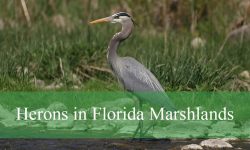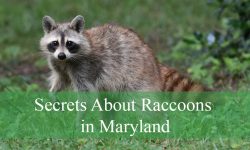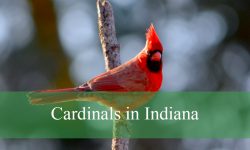Brown spiders in Texas are a common sight in many households and natural areas. These brown spiders in Texas can vary greatly in size and behavior, making them a fascinating subject of study for both amateur and professional arachnologists. Understanding the habits and habitats of brown spiders in Texas is crucial for anyone looking to coexist peacefully with these eight-legged creatures.
Continue reading this article to explore 40 types of brown spiders that can be found in Texas, along with their characteristics and identification tips.
Different Types of Brown Spiders in Texas
Texas Brown Tarantula

The Texas Brown Tarantula (Aphonopelma hentzi), also known as the Oklahoma or Missouri Tarantula, is one of the largest brown tarantulas in the South. It has light and dark brown coloring and grows up to 6 inches in length. Found in Texas, Alabama, and Louisiana, it blends into its arid habitat. This tarantula burrows underground for protection and lines its nest entrance to detect movement and catch prey efficiently.
Arabesque Orbweaver
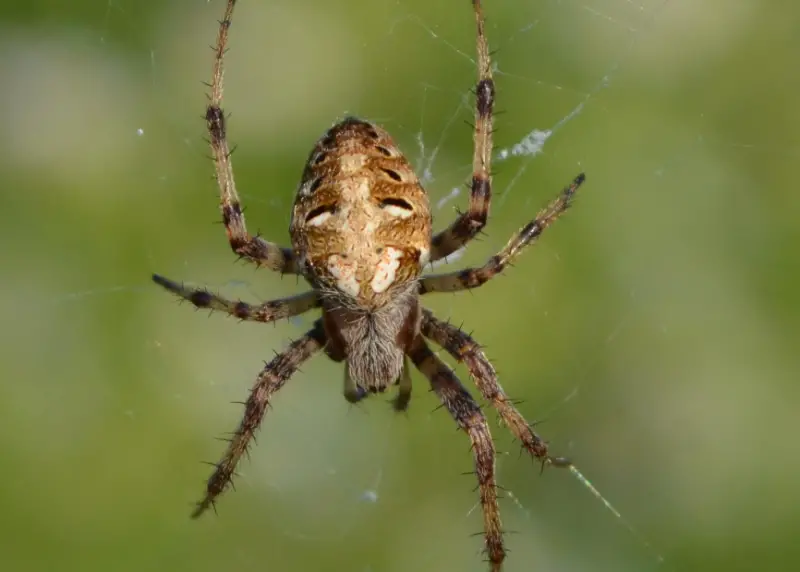
The Arabesque Orbweaver (Neoscona arabesca) is a brown orbweaver found in North America. It features various color morphs, including brown with yellow central sections and a light brown, orange, or rust-orange cephalothorax. The legs are usually light brown. These spiders are elusive, with females constructing large webs but hiding nearby, often behind leaves. Males are rarely seen, mostly appearing to find mates.
White-banded Fishing Spider
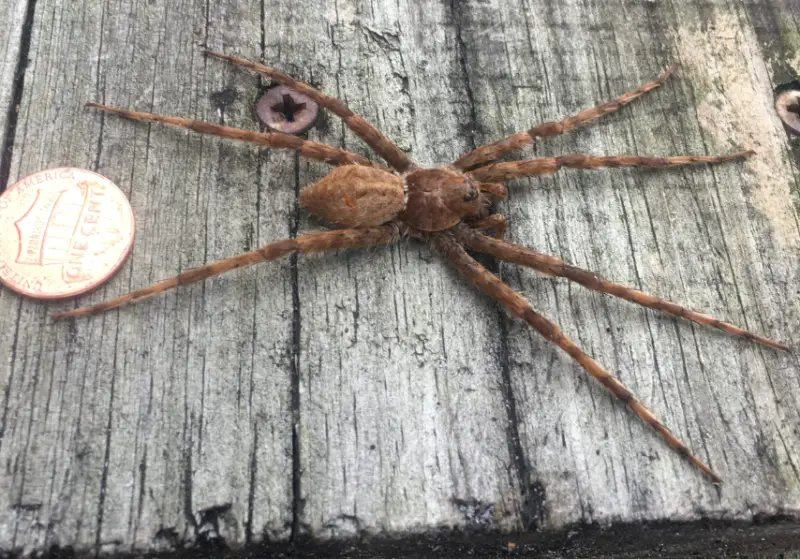
The White-banded Fishing Spider (Dolomedes albineus) typically has a green or gray body with white marks, though some morphs feature brown instead. Commonly found in green and brown, its semi-aquatic habitat influences its color variations. Rare morphs can be orange or rust without brown marks. Despite being a fishing spider, it is often seen on tree trunks, where it hunts small insects like mosquitoes and flies.
Tigrosa annexa
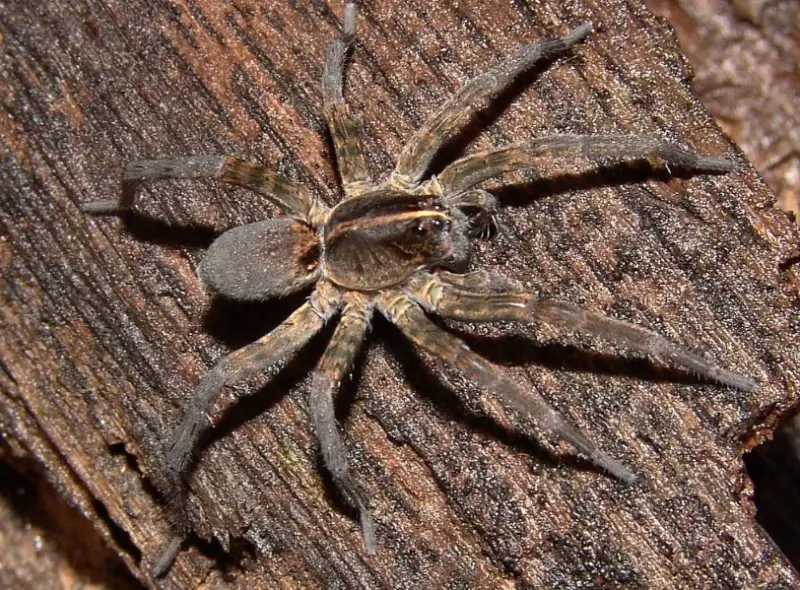
Tigrosa annexa is a fishing spider with a distinct green-brown body, unique among fishing spiders for its green hue. It features wide, dark brown bands and light brown-green coloring on its abdomen and hairy legs. This contrast makes it resemble wolf spiders. Preferring drier, often sandy habitats, it actively hunts on the ground rather than burrowing, seeking out insects for food.
Asiatic Wall Jumping Spider
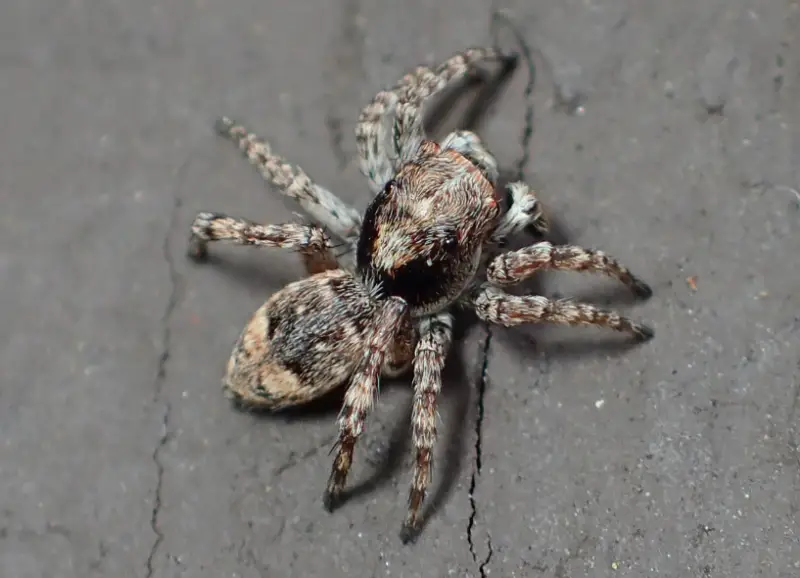
The Asiatic Wall Jumping Spider (Attulus fasciger) is primarily brown with black and white markings. It features light and dark brown chevron-like patterns on its larger abdomen, with brown, black, and white bands on its legs. The cephalothorax displays similar coloring with black marks underneath. Smaller than many North American species, females reach 5–6 mm and males 4-5 mm. They are commonly found on home walls and are attracted to lights at night, where they hunt flies.
Bowl-and-doily Spider
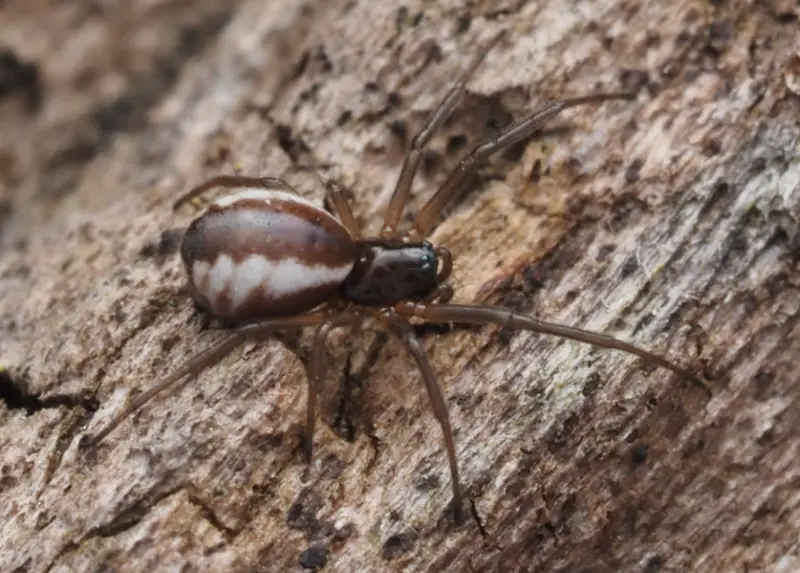
The Bowl-and-doily Spider (Frontinella pyramitela) is primarily brown or red-brown with two lateral white bands on its abdomen. Known for its unique bowl-shaped web, the spider positions itself at the center to snatch insects that come near. It injects paralyzing venom into its prey, which it can later retrieve and consume. Males, who have more white stripes and lack web-building skills, differ from females, which have only two wide white bands on their abdomen.
Western Lynx Spider
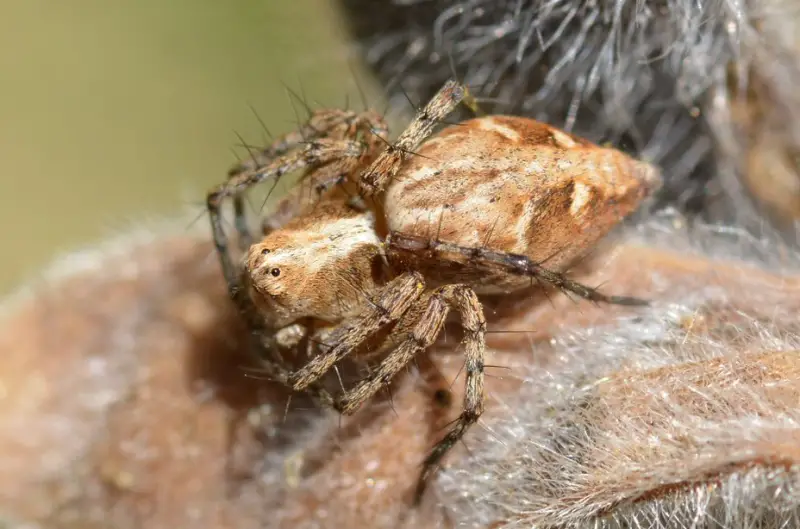
The Western Lynx Spider (Oxyopes scalaris) is notable for its thick, sharp black bristles, which help it catch insects and deter predators. Dominated by brown coloring, it has a light brown abdomen with yellow or white irregular marks, and its cephalothorax features black and white markings. Its legs are marked with light and dark brown bands. With excellent vision, it catches prey by jumping or ambushing.
Tropical Orbweaver
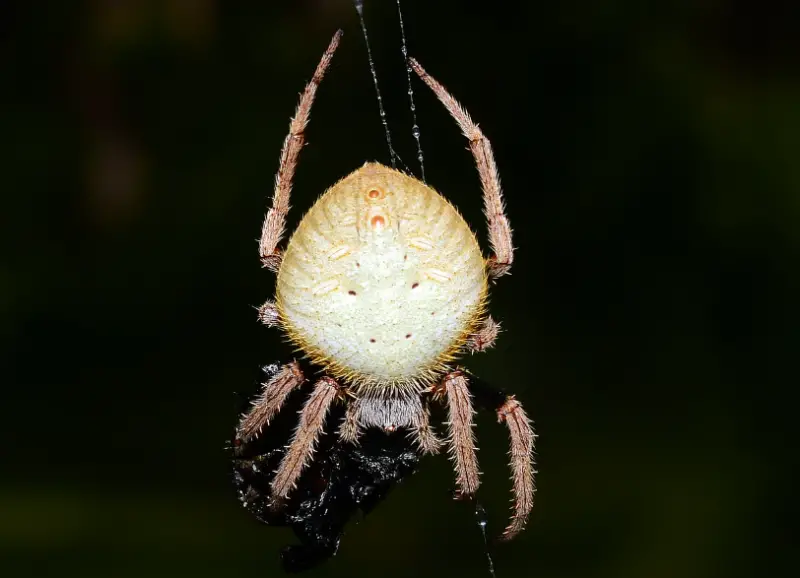
The Tropical Orbweaver (Eriophora ravilla) is a common brown spider found in coastal regions, particularly Florida. Males and females differ subtly in color; females have off-white or light brown markings on their abdomen, while males often exhibit a neon-green abdomen. Both sexes are brown in Florida, with males displaying dark brown and red-brown legs, and females covered in white or light brown hair. Females are further identified by irregular white or off-white dots on their abdomen.
Wetland Giant Wolf Spider
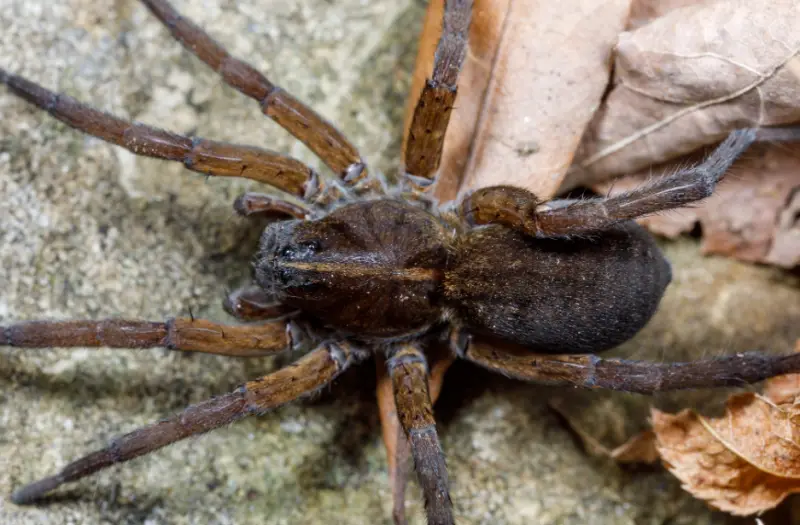
The Wetland Giant Wolf Spider (Tigrosa helluo) features dominant brown or brown-green coloring with black fine lines leading to a central yellow stripe. The spider’s legs are mostly brown or rusty-brown. Preferring marshes and vegetated habitats, it hunts at night for insects and smaller spiders. Females are larger and live longer, up to 2 years, while males have a shorter lifespan.
Garden Ghost Spider
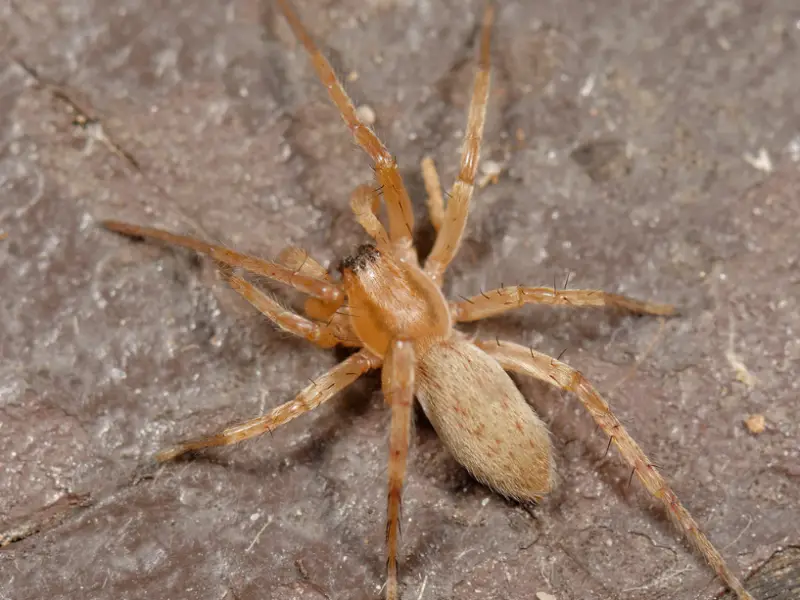
The Garden Ghost Spider (Hibana gracilis) grows to about half an inch and is commonly found in homes. It features an almost entirely brown body with a light brown abdomen marked by dark brown patterns. The cephalothorax is yellow-brown or pale yellow, and the legs are dark or light brown. Preferring to hide during the day, it creates small silk retreats or hides under objects. Active at night, it ambushes insects rather than building webs. Common in warm climates, it is visible year-round in Florida and Texas.
South American Toothed Hacklemesh Weaver
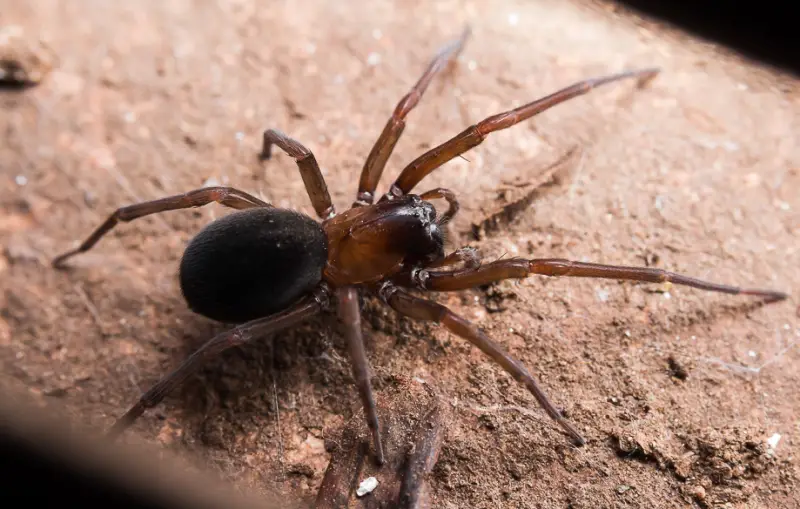
The South American Toothed Hacklemesh Weaver (Metaltella simoni), a brown spider native to South America, has journeyed to the US, settling in Texas, Florida, and California. Introduced accidentally, it thrives in its new environment. Females, larger with a dark brown cephalothorax and uniform black abdomens, differ from the lighter, yellow-marked males. Measuring about 8mm, they commonly hide under rocks and logs.
Mouse Spider
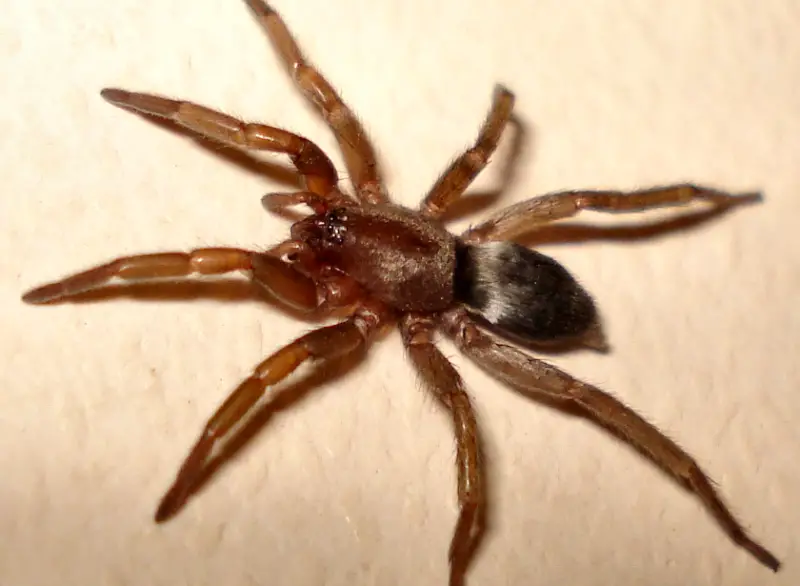
The Mouse Spider (Scotophaeus blackwalli), named for its mouse-like appearance, is a common brown spider found in North America and Europe. Its abdomen is mouse gray, contrasting with its shiny brown body and dark brown legs. Females grow up to 12mm, while males reach about 8mm. These nocturnal spiders prefer indoor environments where they can find insects but also thrive outdoors in summer. They move indoors in cooler climates to avoid winter.
Broad-Faced Sac Spider
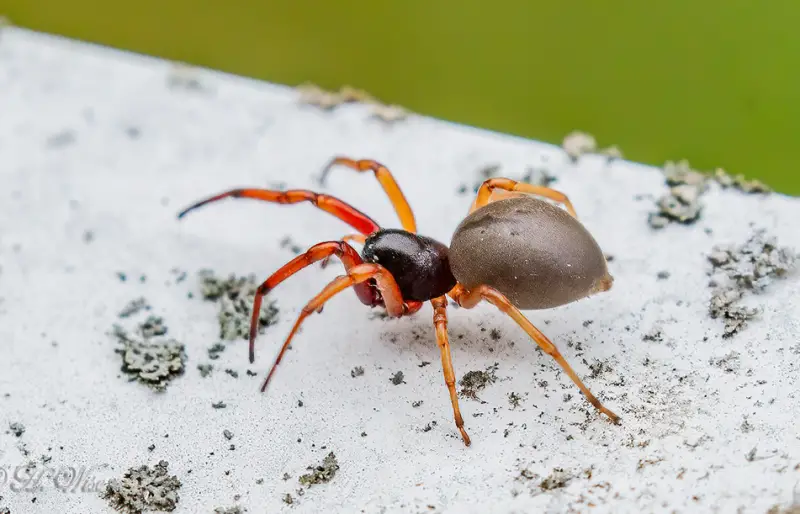
The Broad-Faced Sac Spider (Trachelas tranquillus) features a distinctive black cephalothorax with a mouse-gray abdomen, contrasting with its brown legs and antennae. Some individuals have red-brown legs and antennae. Females are notably larger, growing up to 10mm, while males reach 5-6mm. Both sexes exhibit small dents or puncture-like marks on the abdomen, more visible on lighter gray-yellow abdomens.
Giant Crab Spider
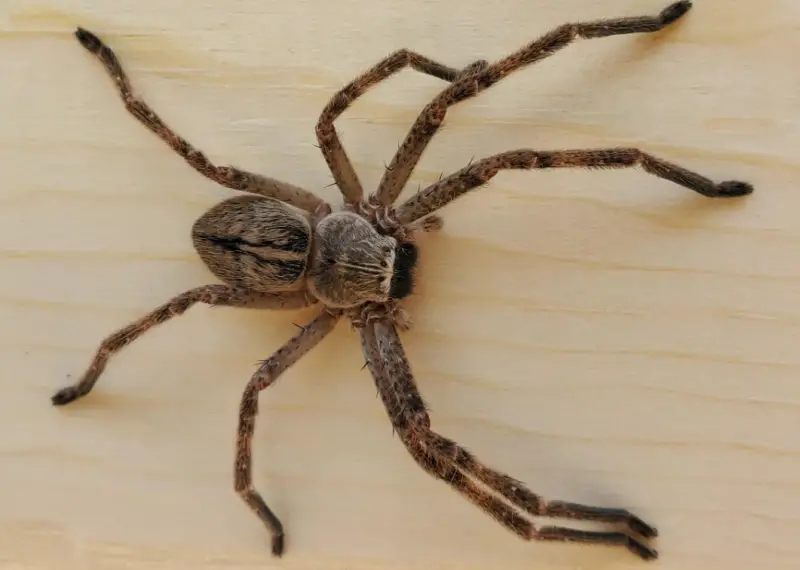
The Giant Crab Spider (Olios giganteus) is one of the largest brown spiders in the US, found primarily in Arizona and the Sonoran Desert. Notable for its brown color and black-striped abdomen, it has an abdomen smaller than its cephalothorax. With legs extending over 50mm, it moves crab-like. Though its bite is highly painful, it is not venomous and generally not dangerous to people.
Grey House Spider

The Grey House Spider (Badumna longinqua) is commonly found indoors, preying on moths and ants. Its distinctive appearance includes a hairy body covered in black and white hairs, with more black at the edges. The legs are brown with black bands. Preferring quiet spaces, it often resides in basements and attics, spinning webs in corners rather than in high-traffic areas like living rooms.
Cat-faced Orbweaver
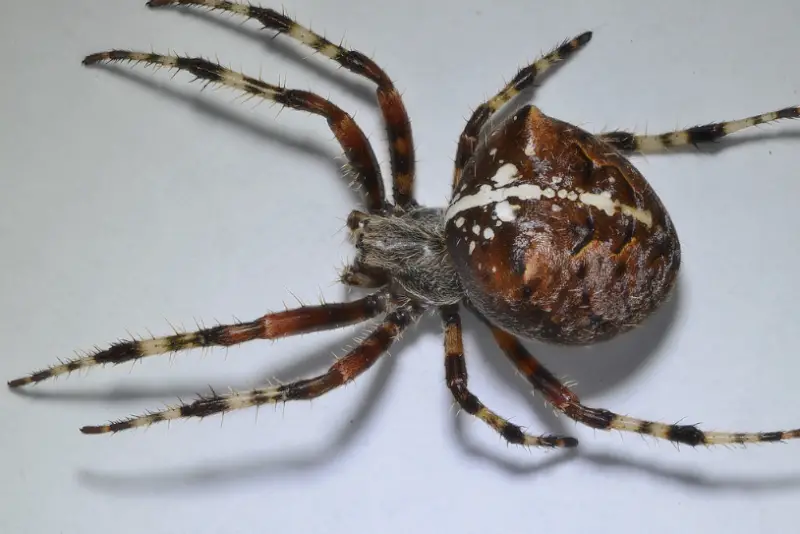
The Cat-faced Orbweaver (Araneus gemmoides), also known as the jewel spider, is notable for its tawny brown color and orb-shaped webs. Females have a light brown abdomen marked with two black spots, black margins, and short white hairs. The rest of the body features light and dark brown hues. Their legs are light brown with dark red-brown bands, and like the abdomen, they are adorned with short white hairs.
Starbellied Orbweaver
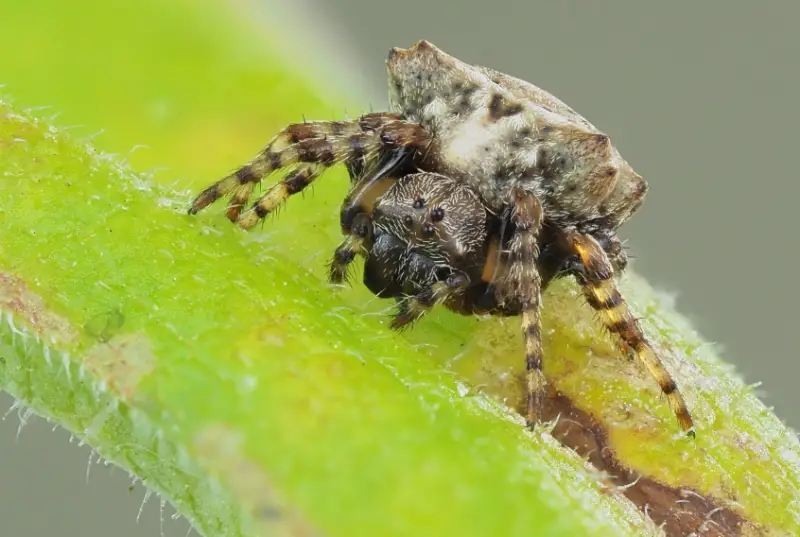
The Starbellied Orbweaver (Acanthepeira stellata), also known as the starbellied spider, is named for its star-shaped spines on the abdomen. The abdomen is gray-brown, contrasting with the dark brown body and bright brown legs. This species is expanding its range and can now be found in both North and Central America. Starbellied Orbweavers build orb-shaped webs in coastal habitats.
Wall Spider
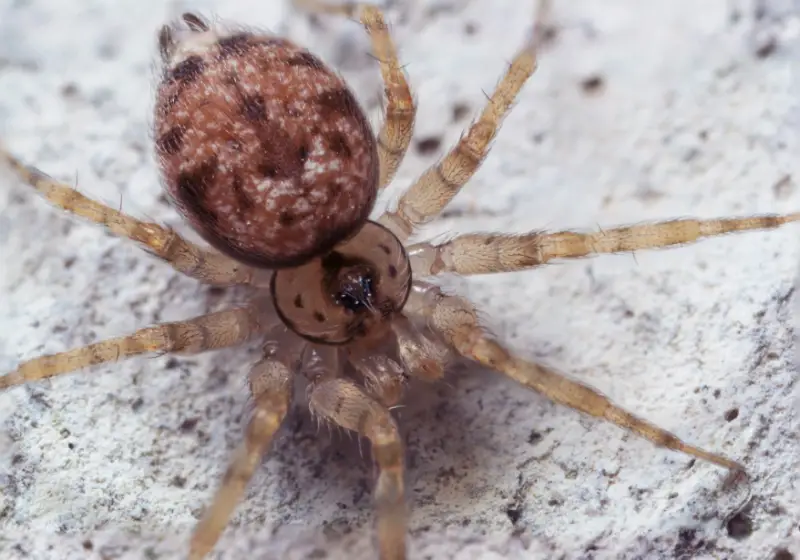
The Wall Spider (Oecobius navus) features white-gray legs and a brown-gray body. True to their name, they inhabit walls, seeking out insects. They utilize wall cracks and crevices, covering these with a simple web to trap flying insects like gnats and mosquitoes. Wall Spiders are non-aggressive and will quickly flee when confronted by people.
Barn Funnel Weaver
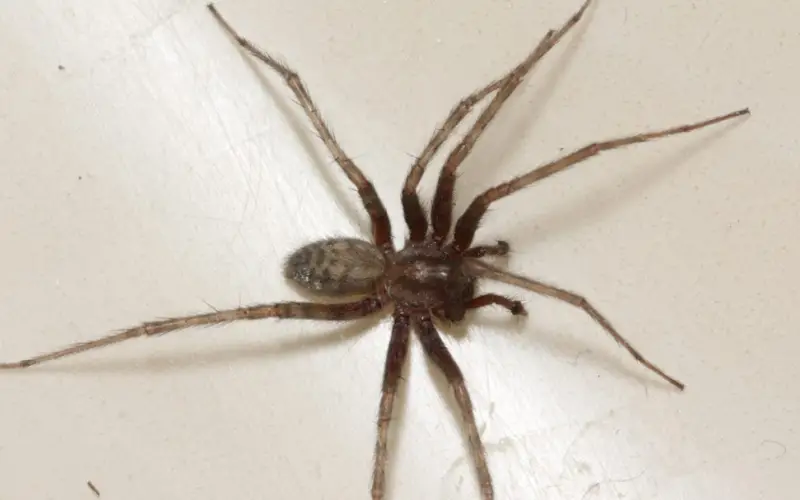
The Barn Funnel Weaver (Tegenaria domestica), also known as the domestic house spider, is commonly found on farms, which is reflected in its name. It features a mix of brown and black coloring with alternating bands on its body and legs. Equipped with thin, long legs, it moves swiftly. Although their bite is not venomous, it can be quite painful, so it’s best to avoid these spiders.
Drumming Sword Wolf Spider

The Drumming Sword Wolf Spider (Gladicosa gulosa) is a prevalent brown wolf spider in North America. It has a background of brown color accented with subtle black marks and prominent black bands on its legs. These nocturnal spiders are challenging to spot during the day, as they camouflage well among brown ground-level leaves, where they hide to avoid detection.
Mediterranean Spiny False Wolf Spider
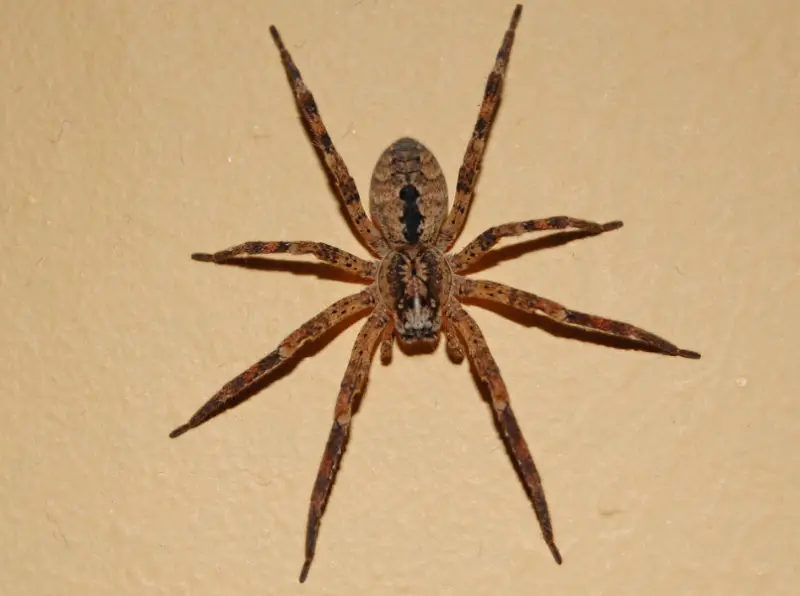
The Mediterranean Spiny False Wolf Spider (Zoropsis spinimana) features a dominant brown color on its elongated abdomen and cephalothorax, with dark brown bands behind its head. These spiders use their dark bands to mimic true-wolf spiders. Their bites are notably painful, penetrating the skin and causing lasting discomfort.
Pantropical Huntsman Spider
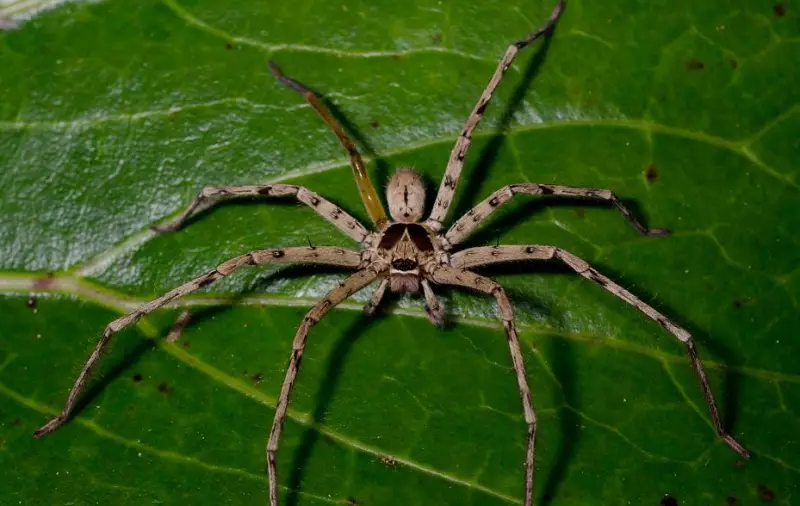
The Pantropical Huntsman Spider (Heteropoda venatoria), also known as the giant crab spider or cane spider, features brown coloring with distinctive black marks on its body and legs. Contrary to common misconceptions, it is not uniformly brown like the Brown Recluse. Its flatter body allows it to enter homes through small cracks and openings in walls. This spider’s appearance and behavior often lead to confusion with the feared Brown Recluse.
Spotted Orbweaver
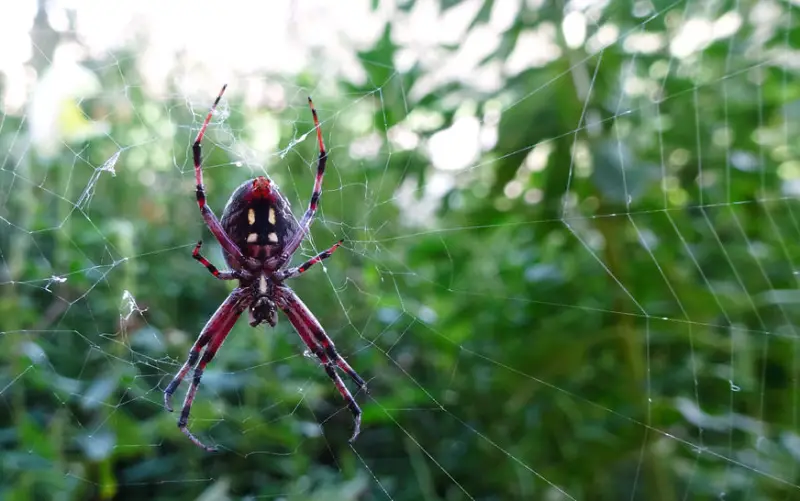
The Spotted Orbweaver (Neoscona crucifera), commonly known as the barn spider or Hentz orbweaver, is a prevalent brown spider in Texas. Typically nocturnal, it shifts to diurnal behavior in the fall, making it more visible. Females grow up to 19 mm, larger than males. Both sexes have a brown body with dark markings and build orb-shaped webs, often attaching them to buildings.
American Nursery Web Spider
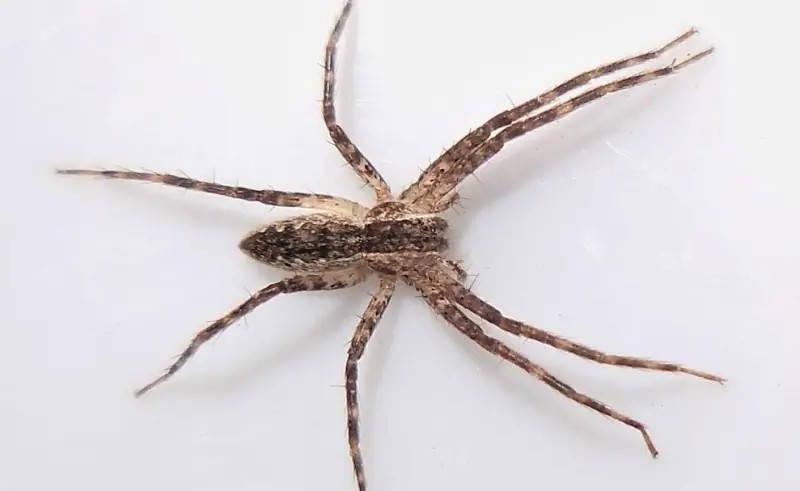
The American Nursery Web Spider (Pisaurina mira) is a yellow or yellow-brown spider with a possible dark brown band across its mid-section. Growing to 12–15 mm, it is an ambush predator that relies on its coloration to blend into its environment. Unlike many spiders, it doesn’t spin webs but hunts prey and large insects. Its camouflage and predatory skills make it an effective hunter.
Dark Fishing Spider
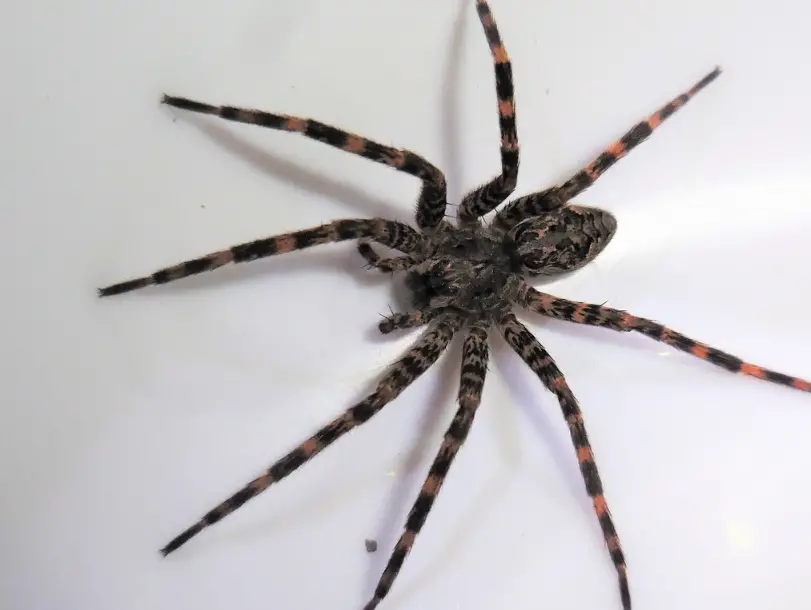
The Dark Fishing Spider (Dolomedes tenebrosus) is one of the largest brown spiders, with a mottled brown and black coloration. Some have small white marks, but dark markings dominate. These spiders have excellent vision and hunt by pouncing rather than spinning webs. Males have a brief lifespan, dying immediately after mating, after which the female consumes them. This ensures the female gains nutritional benefits from the male post-reproduction.
Brown Recluse
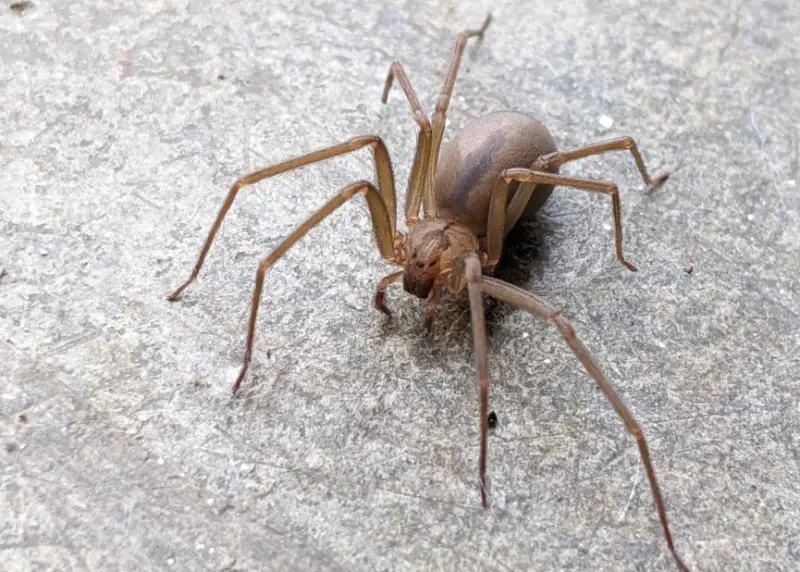
The Brown Recluse (Loxosceles reclusa) is a notable spider in the US due to its medically significant venom, which requires prompt medical attention if bitten. Found commonly in the Southeast, it is light brown in color, though some may be medium brown. Ranging from 6 to 20 mm in size, these spiders can amputate their own legs to escape predators, though they do not regenerate them. They adapt to life with fewer legs but are not found on the West Coast.
Hobo Spider
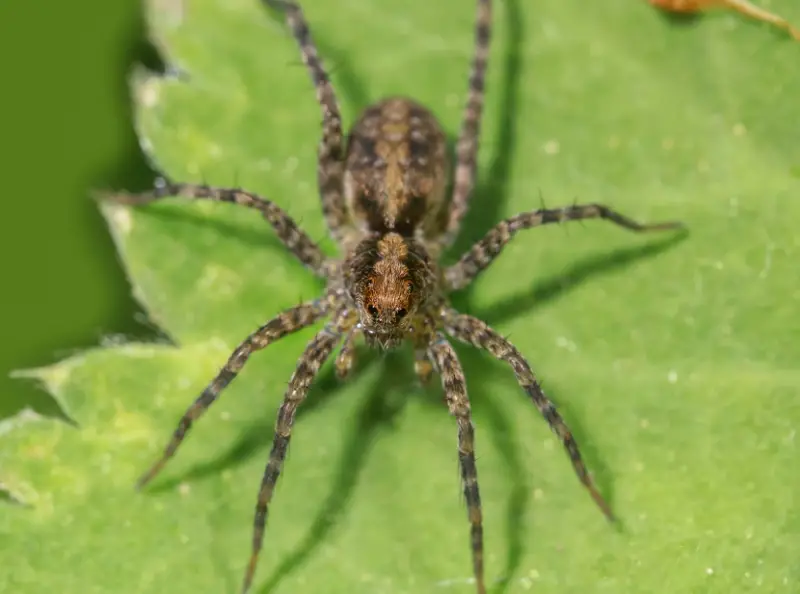
The Hobo Spider (Eratigena agrestis) is a brown spider reaching up to 14 mm in size. It builds webs around homes, garages, barns, and wood piles. Although now considered non-venomous, some reports suggest its bite can cause necrosis. The spider’s venomous potential is debated, but it is commonly found in open fields in the Northwestern US and occasionally in Texas. Indoors, it is rarely seen due to predation by other species like the Common House spider.
Cross Orbweaver
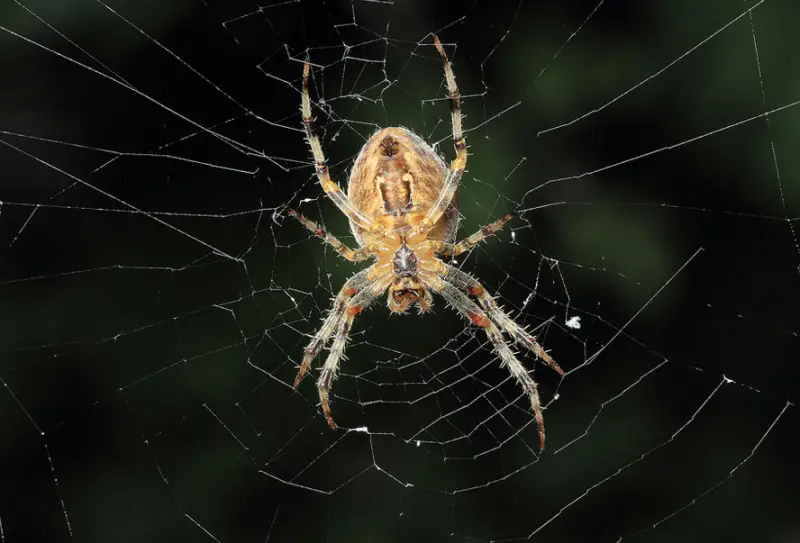
The Cross Orbweaver (Araneus diadematus), also known as the European garden spider, comes in various colors, including brown, white, orange, and brown. It features distinct brown marks on its abdomen and dark bands on its legs. These spiders construct large webs to catch insects and protect themselves, sometimes capturing sizable prey. They vibrate their webs to detect threats and exhibit cannibalistic behavior, with females often consuming males during or after mating. Aggressive towards humans, they are common in the US, Canada, and Europe.
Rabid Wolf Spider
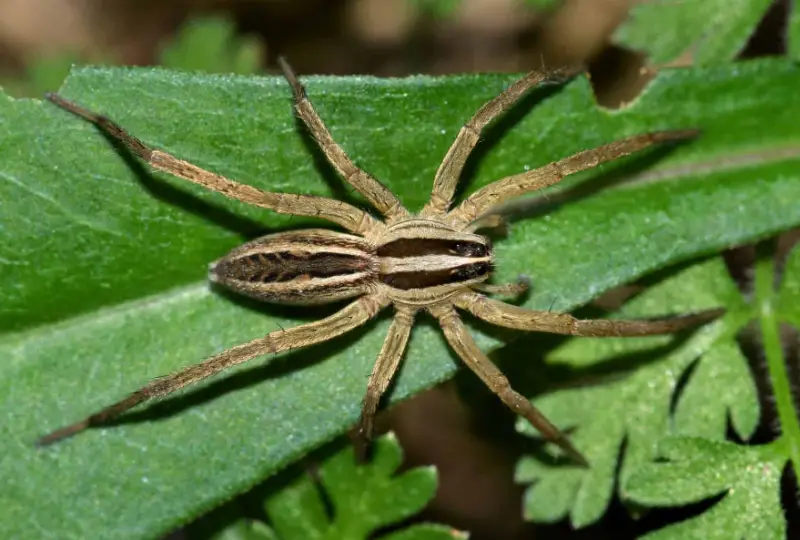
The Rabid Wolf Spider (Rabidosa rabida) is characterized by a wide central brown line on its abdomen and two similar brown lines on its cephalothorax, bordered by light brown. Its legs are light brown. Nocturnal hunters seek prey to pounce on, and their eyes reflect light from a flashlight, making them easier to spot. Though not venomous, their aggressive nature can result in a painful bite.
Brown Widow

The Brown Widow (Latrodectus geometricus), also known as the brown button spider, is part of the same family as Black Widows. It has a brown and black body that changes color with age and may feature an orange hourglass mark on its abdomen. Although venomous, its bite is less severe than that of Black Widows due to a smaller venom dose. Commonly found behind furniture and in thick vegetation, it is well-documented in Southern California, Texas and is expanding northward.
Triangulate Combfoot
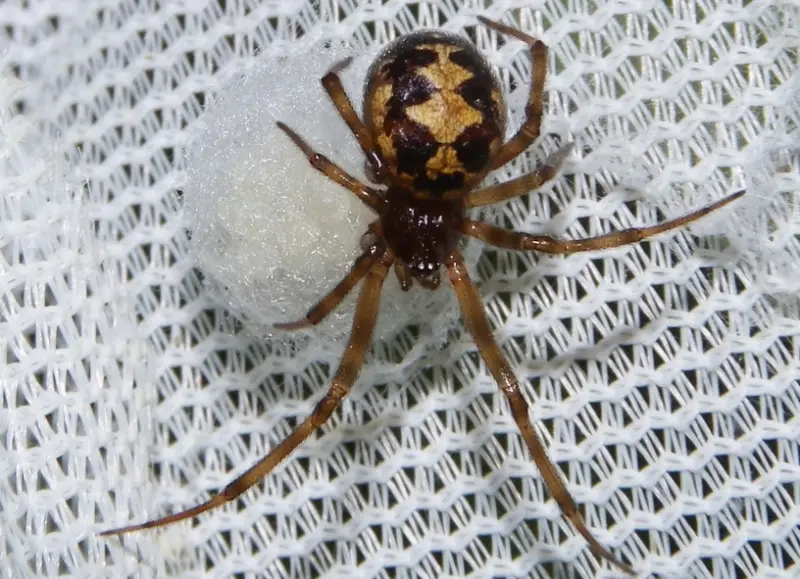
The Triangulate Combfoot (Steatoda triangulosa) features distinctive triangle-shaped markings on its dark abdomen, with legs that are brown and black. Its range is expanding in the US. Though not considered purely beneficial, this spider plays a positive role by preying on dangerous spiders like Brown Recluses, as well as ticks, pillbugs, and ants, including Fire Ants. Its presence can be advantageous in gardens and around homes.
Furrow Orbweaver
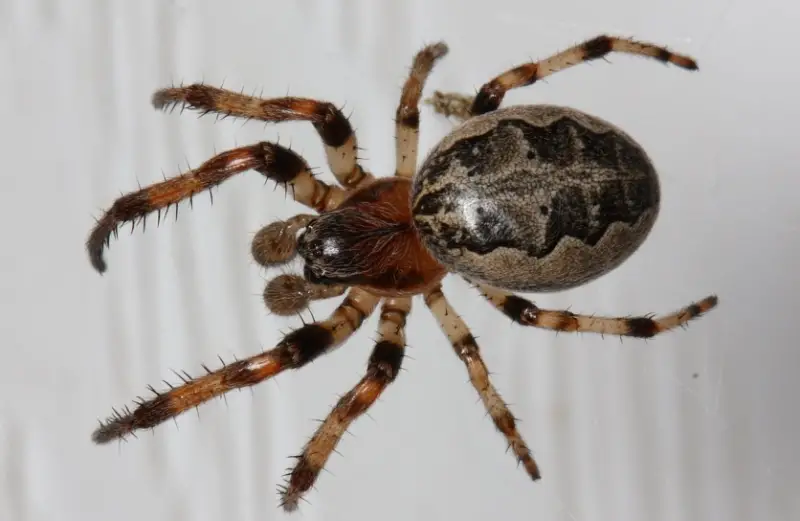
The Furrow Orbweaver (Larinioides cornutus), also known as the furrow spider or foliate spider, is a brown spider often found near water sources like rivers, ponds, and lakes. They exhibit color variations, including brown and yellow or brown and pink morphs. These spiders construct large, orb-shaped webs, which they repair daily. Typically, Furrow Orbweavers remain hidden near their webs rather than exposing themselves openly.
Noble False Widow

The Noble False Widow (Steatoda nobilis) has a shiny brown body with dark brown legs, a brown to black cephalothorax, and a light brown abdomen. Known for their venomous bites, these spiders consume a wide range of prey, including small bats and woodlice. They are considered highly venomous in Europe and North America, with bites causing severe pain comparable to that of a large wasp, lasting for hours.

